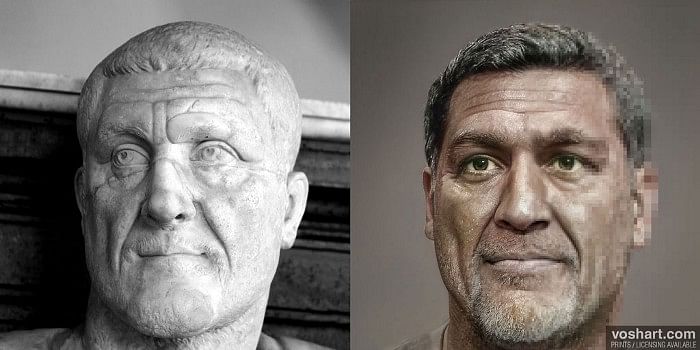A series of facial reconstructions of Roman emperors during the Crisis of the Third Century (235-284 CE), including the Gordian Emperors. These so-called "Barracks emperors" seized power during a time of turmoil, and their reigns were typically brief and violent. During this period, the Roman Empire fragmented, before being eventually reunified during the reign of Aurelian (270-275 CE).
These photorealistic reconstructions are only best guesses at how their subjects may have appeared, based on literary and artistic evidence. Some artistic license has been taken to fill in certain details that ancient sources failed to note. In some cases, artistic evidence is scarce, so portraits of close relatives are used to give an indication of how a subject likely would have appeared. Part of "Appearance of the Principate", a larger series by Daniel Voshart, made using Photoshop and Artbreeder, a neural net tool.

